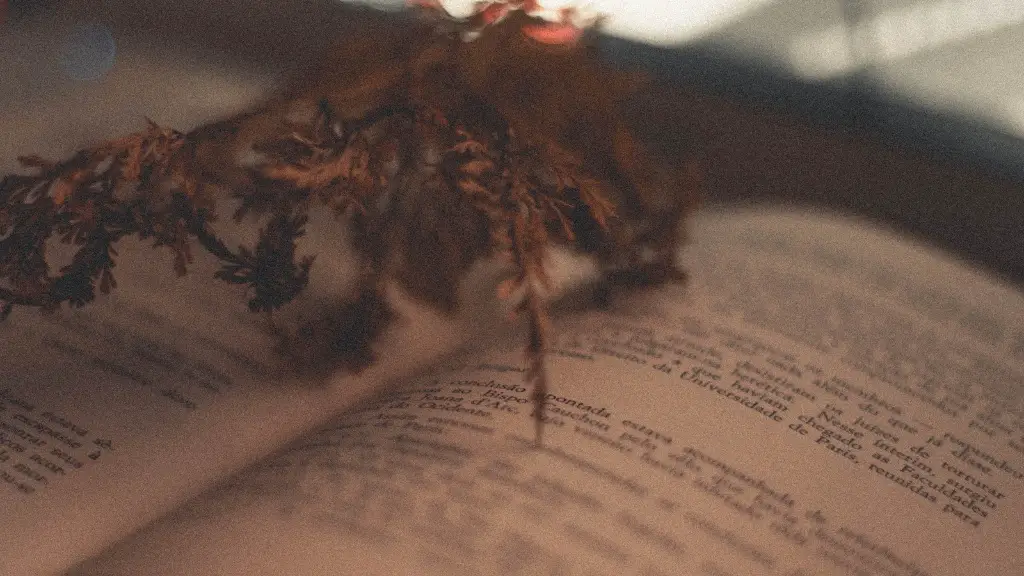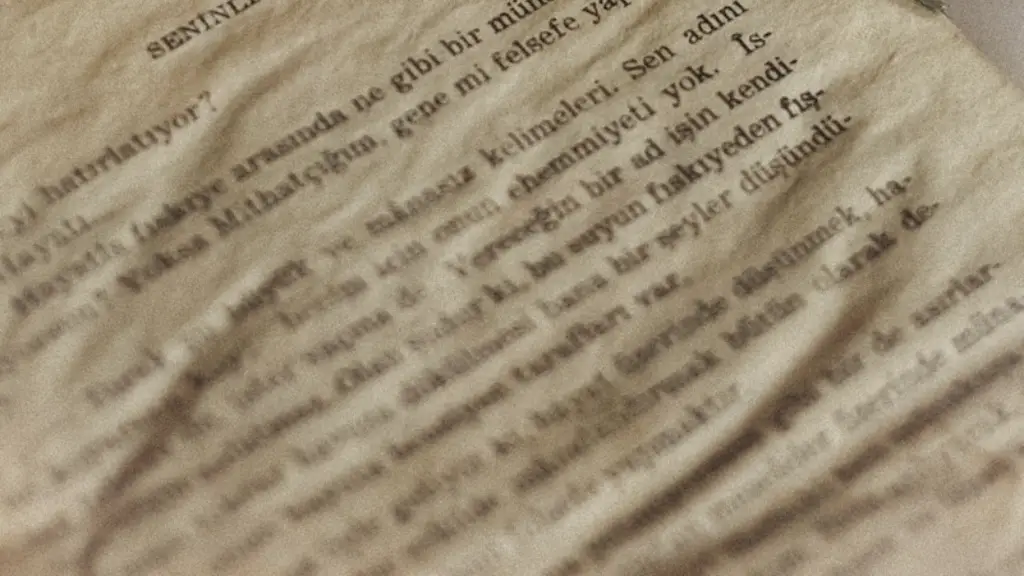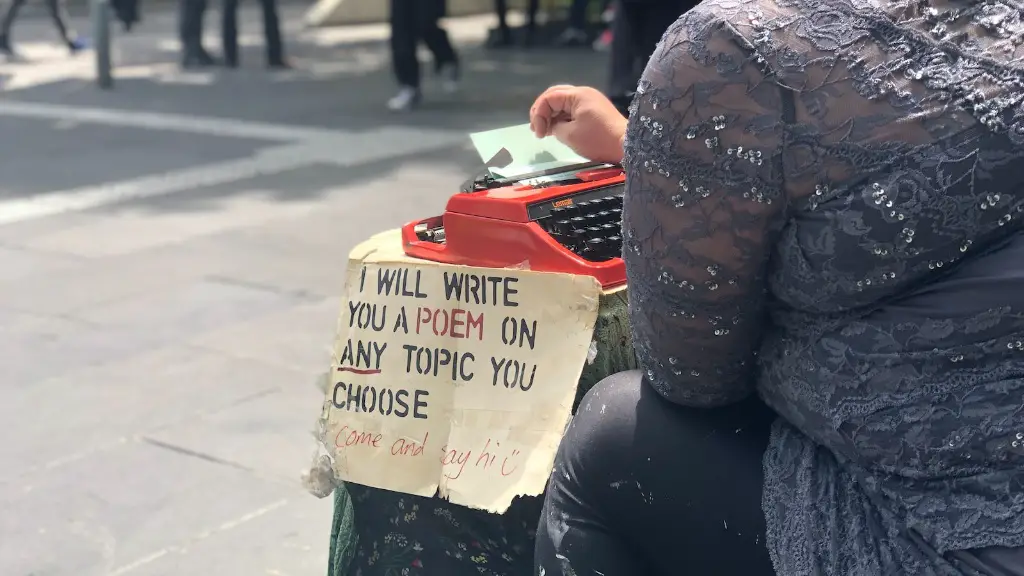Background Information
Romantic poetry is a style of writing that was developed during the late 18th and early 19th centuries in Europe. This type of poetry typically evokes emotion, paints vivid imagery and expresses a longing for freedom and love. Romantic poets often wrote about nature, the natural world and their desire to escape from social conventions. Romantic poetry typically has a strong focus on the individual and their emotions, with themes of honour, justice, passion, sorrow and joy being commonplace. The purpose of romantic poetry was usually to express some kind of powerful emotion or idea.
Key Elements of Romantic Poetry
There are three key elements typically found in romantic poetry: nature, emotion and imagination. Nature is often used to provide a backdrop, and to express the poet’s deep appreciation of the beauty in the natural world. Emotion is the primary aim of romantic poetry, and most romantic poems are written to express powerful feelings like love, joy, sorrow or awe. Imagination is also key; romantic poets often use vivid imagery to evoke emotion and to capture precisely their feelings about a particular moment or event in their lives.
Biblical Allusions and Metaphors in Romantic Poetry
Another common element of romantic poetry is the use of Biblical allusions and metaphors. Romantic poets often make use of Biblical themes, characters and stories as a way to draw the reader into their stories and to create a sense of atmosphere and emotion. Metaphors and similes are also commonly used to describe certain emotions or situations. For example, a romantic poet might describe love as being like “a burning fire,” or describe the joy of a particular moment as feeling like “the sun is touching your skin.”
Onomatopoeia and Personification in Romantic Poetry
Onomatopoeia is a device used in romantic poetry in which words are used to imitate the actual sounds associated with the thing being described, such as “buzzing bees” or “splashing waves.” This helps to create an atmosphere of realism, and to increase the emotional intensity of the poem. Personification is when objects or animals are given human qualities; for example, a romantic poet might describe the sun as “smiling down on us.” This helps to intensifies the emotions associated with the poem, and can also create a certain kind of atmosphere or mood.
Example of Romantic Poetry: William Wordsworth’s “The World is Too Much with Us”
One of the best-known examples of romantic poetry is William Wordsworth’s “The World is Too Much with Us.” This poem is a lament for the passing of the innocence of nature, and focuses on the disconnect between humans and nature in the age of industrial revolution. Wordsworth makes extensive use of metaphor and personification to express his feelings about our separation from nature. He also uses Biblical allusions- his closing line, “God has forsaken us”, is an allusion to Adam and Eve’s expulsion from Eden.
The Power of Romantic Poetry
Romantic poetry is a powerful form of expression, and can be seen as a way for poets to communicate the depths of their emotions, to draw the reader into a particular moment, and to create a vivid atmosphere. By making use of elements such as nature, emotion, imagination, Biblical allusions, metaphors, onomatopoeia and personification, romantic poets are able to evoke powerful emotions and create a unique and lasting impression on their readers.
Exploring Social conventions of Romantic Poetry
Romantic poetry is often seen as a critique of the traditional social conventions of the time, with many romantic poets expressing their discontentment with the status quo in their works. By expressing his or her thoughts on the themes of love, freedom, justice and morality, a romantic poet can challenge the accepted views of their society and suggest alternative ways of thinking.
Political and Social Revolution in Romantic Poetry
Romantic poetry also served as a means to rally people behind a cause and to promote social change. During the period of the French Revolution, many romantic poets used their work to argue for more fairness and equality for all citizens. By expressing their discontent with the injustices of their society, these poets helped to inspire and motivate people to take part in the political and social revolution that was occurring at that time.
Rational and Emotional Expression in Romantic Poetry
Romantic poetry is often seen as the combination of rational and emotional expression, with the aim being to evoke powerful emotions in the reader. The rational element of the poem can be found in the references and allusions to biblical stories, historical events and social conventions, while the emotional element can be seen in the vivid descriptions of emotional states and the use of elements such as metaphor and personification.
Satirical Elements of Romantic Poetry
Satire is commonly found in romantic poetry, with poets often using humour to criticise their society and the injustices that they perceive. This can be seen, for example, in Wordsworth’s “The World is Too Much with Us,” in which he utilises wit and irony to express his dissatisfaction with his society. Other romantic poets such as Lord Byron, Alfred Tennyson and Percy Bysshe Shelley also made use of satire in their works in order to criticise the conventions and injustices of their time.
Popular Themes in Romantic Poetry
Common themes found in romantic poetry include nature, freedom, love, mortality, justice and morality. Other popular topics of romantic poetry include introspection, the power of imagination, the human condition, heroism, spirituality and the idealisation of beauty. These themes are often explored through vivid imagery and the use of symbols, metaphors and allusions.
The Place of Romantic Poetry in Modern Times
Romantic poetry has had a major impact on modern poetry, and its influence can be seen in the works of modern writers such as W.B. Yeats and T.S. Eliot. Although less overtly emotive and passionate than its romantic counterpart, modern poets often draw upon the same themes as their romantic predecessors, as well as exploring new issues such as technology, mass media and the power of language. Romantic poetry continues to be a popular form of expression, and its influence in modern poetry remains strong.



